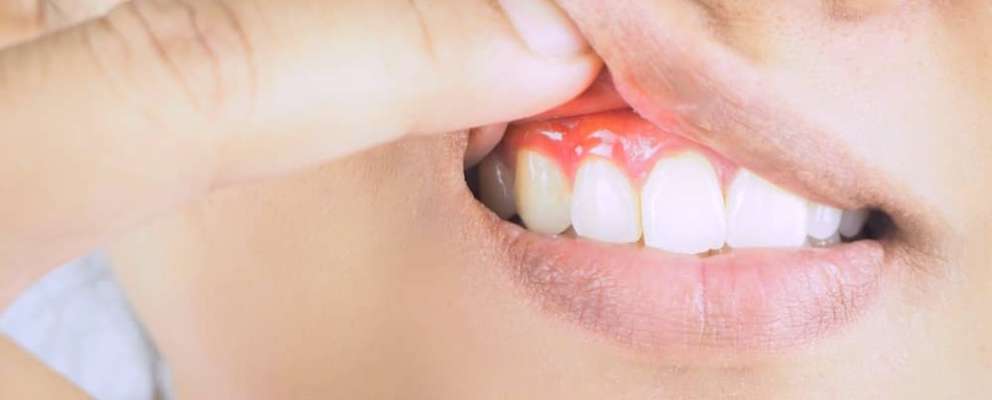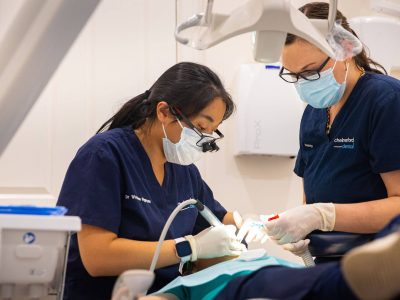Many health conditions are sneaky – you never know you have them until they worsen. These conditions often cause discomfort, and one of them is gum disease. Surprisingly, many people around the world have gum disease. According to the World Health Organisation, about 10 per cent of the world’s population has this problem. Meanwhile, 22.9 per cent of Australians have either severe or moderate gum disease.
So What Exactly is Gum Disease?
Gum disease is defined as an inflammation of the gums and tissues that hold your teeth in place. When left untreated, it can progress to a much worse condition that affects the bone in the mouth. This bone not just surrounds the teeth but also provides support for them.
Before we delve deeper into gum diseases, it is essential to know about specific terms involved here. Many people use different names for gum disease, even though they are not interchangeable.
The most common mistake concerns the following:
- Periodontitis
- Advanced periodontitis
- Gingivitis
A quick Google search will easily confuse you because these terms are used to describe gum disease. In reality, they are the three stages of the condition. The least severe is gingivitis, which can lead to periodontitis. If you do not care for your oral health, it can result in advanced periodontitis.
The other word for gum disease is actually “periodontal disease,” which is derived from the word “periodontium,” pertaining to the structures around the teeth.
Periodontal disease should not be ignored because it can lead to tooth loss. Unfortunately, this condition is almost always painless. It also develops quite slowly, so you may not even know you have the infection.
What Causes Gum Disease?
Your mouth contains millions of bacteria, and it is these microscopic bacteria that can infect the tissue around the tooth. Patients will often complain about inflamed gums but will shrug it off because it eventually goes away.
Bacteria, if not dealt with, can stay long enough on the teeth, beginning the destruction. A film-like substance will surround the teeth, which is what is known as plaque. It will remain on the teeth and accumulate. After a certain period, it will harden, forming tartar. You may know tartar as calculus, which will spread below the gum line. At this point, it can be tough to clean this off your teeth with your toothbrush.
Tartar can still be removed, but you will now need the help of a dental health professional. During the process, periodontal disease can be detected and be stopped in its tracks.
Later on, you will learn about how this disease progresses. But the leading cause is poor hygiene. When oral health is ineffective, plaque appears. Of course, it is not the only cause. Other people with inadequate nutrition, as well as those with underlying medical issues, can develop periodontal disease. It happens even when they have good oral hygiene. An example is a diabetic who has a considerable risk of acquiring gum issues. People with diabetes are required to be meticulous when it comes to their dental care to ensure they do not suffer from the disease.
Other causes include hormonal changes during pregnancy, and taking medications that reduce saliva flow. Specific illnesses, including AIDS, can also contribute to the development of gum disease. The medications used to treat many diseases can also increase your risk.
Having crooked teeth also makes you predisposed to the disease. Teeth can overlap or even become crooked. However, if they are crowded together, the mouth can easily be the ideal breeding ground for bacteria that cause gum disease. It is crucial more than ever to watch your dental hygiene if you have crowded or crooked teeth. It may be enough reason for you to straighten them using Invisalign.
Your genes also determine your susceptibility to this condition. Therefore, if your parents or any of your siblings have the disease, you could also develop it. It is important to take care of your oral health to prevent it from happening.
You cannot control many of the risks mentioned, but you can keep your mouth healthy by brushing and flossing correctly. It is also very important to avoid smoking; smoking can greatly accelerate the disease process, causing rapid loss of the bone that holds your teeth in place. Smoking greatly increases your risk of suffering from gum disease, and also makes treatment less successful.
The Stages of Gum Disease
As mentioned, there are three significant stages of gum disease. The best approach is to treat the problem before it gets to the second stage, which is periodontitis. What makes it challenging is that many people do not even know they have gingivitis or the first stage of periodontal disease.
Let us take a look at the progress of the condition:
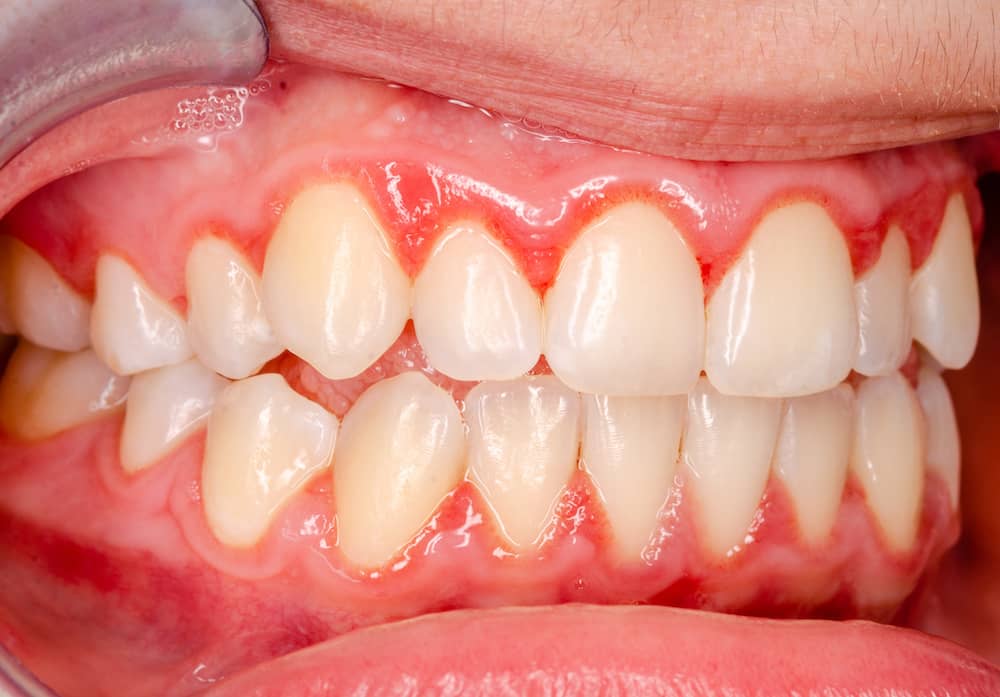
1. First Stage: Gingivitis
During the earliest stages, gum disease appears mild, usually undetected. You will often feel your gums are swollen. If you look in the mirror, you will see the gums are red.
The good news is that if detected, your dentist can easily get rid of gingivitis. Unlike other bacterial gum diseases, it is not as severe and rarely needs surgical treatment. However, you should now be more vigilant in keeping up with your oral care routine.
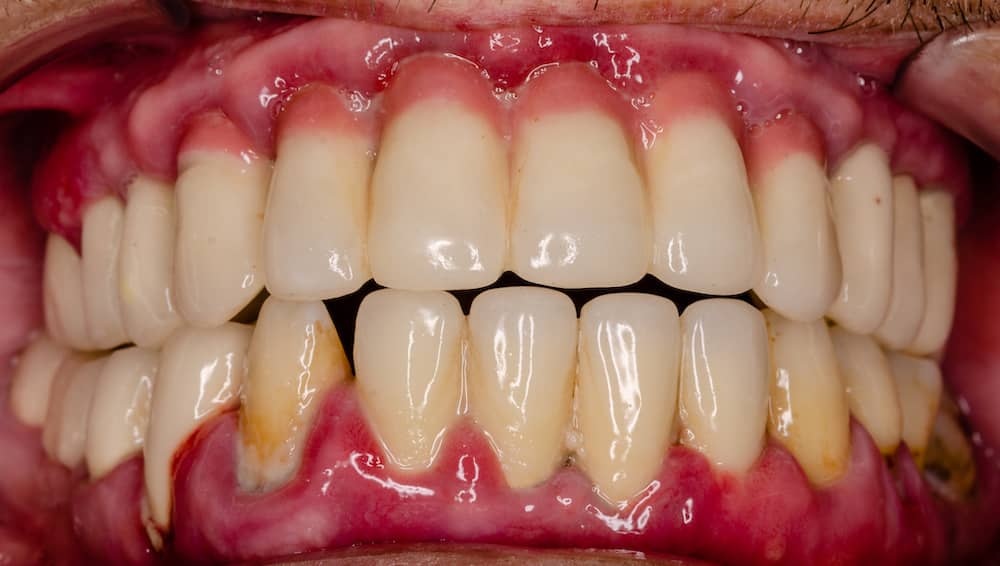
2. Second Stage: Periodontitis
If you did not pay attention to your gums at the first stage, the problem would get a little worse, causing chronic periodontitis. You now have a full-fledged gum disease, which many adult Australians suffer from. It is more common in people who are older than 35 than in children.
At this stage, the symptoms are more worrisome because you may notice your gums receding. This is not normal, and you should have your mouth checked right away. Pockets are also formed between the teeth and gums, which can cause more plaque to accumulate and accelerate the disease process.
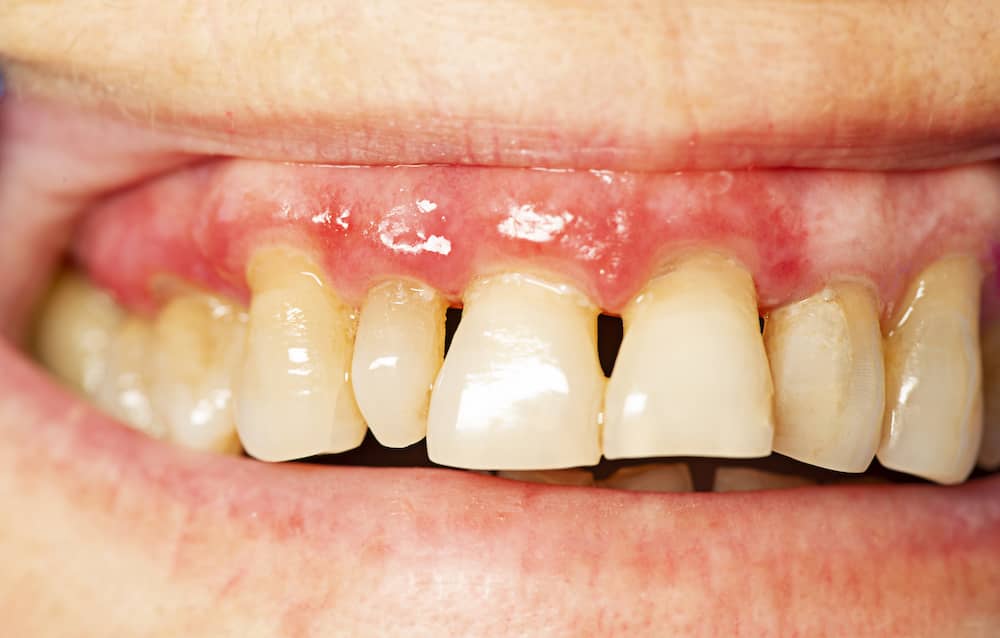
3. Third Stage: Aggressive Periodontitis
You can already tell that you should not let the gum disease reach this stage. Both adults and children can develop this type of periodontal disease. Kids as young as three and adults around 20 years can suffer from aggressive periodontitis. It is a severe case that leads to tooth loss.
Subtypes of this periodontitis involve localised juvenile periodontitis, which is a condition in adolescents. Gum bacteria at this point have already invaded and over-colonised the mouth.
Children tend to ignore tooth pain or not even experience it. However, parents often notice excess plaque, swollen gums, and the presence of pus. The child should go to the dentist to find out how to deal with the situation.
There is a fourth stage, which is quite rare. It is known as necrotising periodontitis, which is the most severe of all. It not only causes tooth loss but also destroys tissues, bones, and ligaments present in the mouth.
People with the highest risk are:
- Smokers
- Malnourished individuals
- Those with compromised immune systems (such as AIDS patients)
You may want to know whether or not you are at risk of gum disease. Following the risk factors given above, gum disease typically occurs in those who smoke, have poor nutrition, and with poor oral hygiene. Also, people with certain conditions, such as diabetes and HIV/AIDS, have a high risk.
Age is also a risk factor. Periodontitis is not usual in younger people, including teens, but it is easy for them to develop gingivitis. Adults, on the other hand, have a massive risk for both.
As mentioned above, having crooked teeth contributes to having gum disease. But even if you have dental appliances, if they fit poorly, can lead to the condition. Lower your risk by avoiding smoking and chewing tobacco.
Other risk factors for periodontal disease include:
- Taking oral contraceptives
- Using steroids and anti-convulsants, as well as calcium channel blockers
- Those under chemotherapy
- Having broken tooth fillings
- Being pregnant
What are the Signs of Gum Disease?
Now the question is, how do you know you have gum disease?
Although periodontal disease is not easy to detect without a professional’s help, there are some signs to watch out for. Knowing these signs is especially important for parents who suspect their child has periodontal disease.
Here are some symptoms to look for:
- Inflamed, red gums
- Bad breath
- Gum recession or gums moving away from the teeth
- Bite changes
- Pus appearing between teeth
- Gums that bleed quickly – often without any reason
- Loose teeth
- Pain when chewing
If you do not have any of the symptoms listed above, it may not mean you are safe from the condition. Your mouth can appear clean and healthy on the surface, but you can still have gum disease. Be aware of the signs and take the time to visit your dentist regularly. It is your best defence against gingivitis and periodontitis.
Prevention Tips
You can avoid having gum disease. Even if you already have gingivitis, you can prevent it from getting worse. What you need to do is to visit your dentist at Chelmsford Dental regularly to have your mouth health checked.
You should also brush your teeth twice every day using fluoride toothpaste. Floss daily as well to get rid of food pieces lodged between the teeth. Make sure that you replace your toothbrush every two to three months. If you can, it is better to use an electric toothbrush. An interdental cleaner can also be valuable.
Since gum disease affects how your breath smells, your dentist may recommend a mouth rinse. It will, of course, depend on your situation. If you smoke, you should give up this bad habit. It does not just increase your gum disease risk, but also deteriorates your health.
Aside from having good oral hygiene, your diet also plays a role in the health of your gums. You need to eat a balanced diet to maintain healthy teeth and mouth.
Treatment Options
Treating gum disease starts from your home. After your dentist tells you that you have this condition, you should do your best to remedy the situation. Practice good oral hygiene to begin and also cut back on smoking if you do. For those with diabetes, it is best to talk to your doctor to determine how to manage it.
There are other treatments that the dental health professional may suggest, including:
1. Deep Cleaning
This method allows deeper clean for the teeth, which removes plaque and tartar. The dentist may use a specific technique that suits your case.
Often, the options include:
- Scaling, which gets rid of tartar that appears above and below the gum line
- Root planing for smoothing rough spots while also eliminating plaque and tartar, especially if they appear on the root surface of the teeth
2. Using Antibiotics and Medications
Some medications are used to control bacteria and other causes of gum disease. For instance, your dentist may prescribe an antiseptic mouthwash such as Savecol. Its active ingredient is chlorhexidine, which is useful in disinfecting the mouth.
Other treatments include:
- Time-released capsules, often with chlorhexidine, which are inserted into the teeth and gum pockets after the root planing procedure
- Oral antibiotics for treating persistent gum inflammation
- Antibiotic microspheres, which have minocycline and is also inserted into the pockets after either scaling or planing
- Doxycycline, which is a specific antibiotic for calming down enzymes, so they do not cause tooth damage
You should not just take any medication without the recommendation of the dental healthcare professional. These medications are designed to control bacterial infection. However, they do not completely cure the disease. You still have to practice good oral hygiene.
3. Surgery
When the teeth and jaw can no longer heal using the medications above, bone and tissue grafts may be used. One more option is flap surgery. It is a minor procedure where the patient’s gums are lifted back to their original place. During the operation, plaque and tartar will be removed as well. The final step is to suture the gums in place. This way, they will fit snugly around the teeth surface.
The goal of surgery is to perform calculus removal. If there are bone irregularities, the procedure will also help take care of them. Often, they are present when the disease has already progressed to periodontitis. Certain studies have shown that surgery, coupled with post-treatment maintenance, halted tooth loss in 85% of cases.
Frequently Asked Questions about Gum Disease
Although gum disease is quite a common phenomenon, many people still have many questions about it. To understand the condition better, here are the answers the most frequently asked queries about periodontal disease:
- Is gum disease just for older people?
Definitely not! Gum disease can happen to anyone, including kids who are as young as three years. Even teens and young adults in their 20s can have gum disease. Also, even your pets can have it, making dental checkups a requirement for healthy mouth overall.
- Is it contagious?
Most studies indicate that periodontal disease is not contagious, however, you can unwittingly pass the bacteria that are responsible for gum disease to the people you love. It makes sense to be aware of everyone’s habits to ensure you and other people do not get exposed to gum disease.
- Is “pink in the sink” normal?
When brushing and flossing, you may see a little bit of blood when you spit out. Many people believe it is a typical occurrence and just forget about it. The truth is that your gums should not bleed – period. If you see blood, talk to your dentist about it.
- Why should pregnant women be worried about gum disease?
It does sound surprising, but studies have shown there is an essential link to a woman’s oral health and her unborn child. If you are diagnosed with gum disease, you have a high risk of delivering prematurely. See your dentist regularly, even when you are pregnant. This way, you know what to do if you have any gum ailments.
Another compelling reason why you should take care of your teeth is that it can affect your lifespan. A study – and several others – proved that losing teeth can shorten your life expectancy. People with at least 20 natural teeth by the time they reach 70 lived a longer life than those who did not.
Stop gum disease by following a good oral care routine regularly. Also, visit your Chelmsford Dental dentist to ensure the disease and other problems are detected right away.
